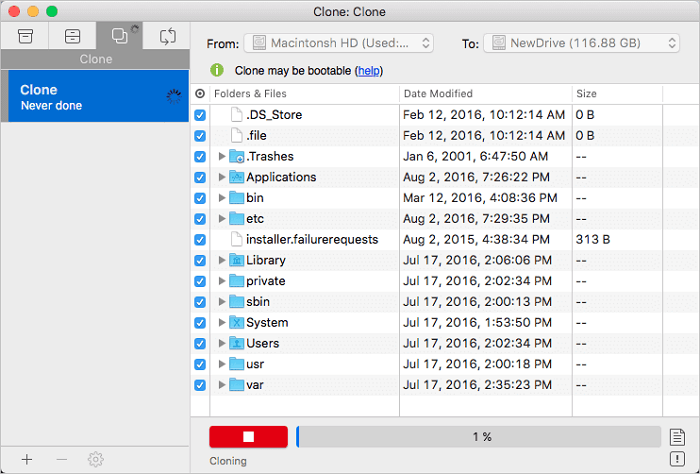Mac OS X Utilities application, you may need to repair your computer’s disk. Select Disk Utility in the Mac OS X Utilities pane and click Continue. Select the disk or partition in the list on the left, and then click the First Aid tab. Click Repair Disk. If Disk Utility can’t repair the disk, back up as much of your information. Feb 05, 2020 There are many disk repair tools for Mac that make lofty promises even though they can’t do much more than the Disk Utility app, but DiskWarrior isn’t one of them. This disk repair tool for Mac has pioneered its own approach to disk repair, helping its customers solve challenging directory issues without risking data loss. Mar 07, 2018 How to Repair Disk Permissions. Since home directory permissions are locked in modern versions of macOS, there isn’t a “repair disk permissions” button on macOS anymore. But you can use the “First Aid” tool in Disk Utility to accomplish essentially the same task. Open Disk Utility by typing “Disk Utility” into Spotlight. Disk Utility First Aid is a built-in disk repair software in macOS. Its main task is to verify and check the health of the disks and volumes on your Mac, such as Macintosh HD, SSD, external hard drives, USB drives, flash drives, and SD cards. Essentially, Repair Disk Permissions restores to their default values the Unix permissions for all files Mac OS X installs. This can remedy cases where you can’t open, move, or delete files.
Disk Utility can find and repair errors related to the formatting and directory structure of a Mac disk. Errors can lead to unexpected behavior when using your Mac, and significant errors might even prevent your Mac from starting up completely.
Before proceeding, make sure that you have a current backup of your Mac, in case you need to recover damaged files or Disk Utility finds errors that it can't repair.
Open Disk Utility
Start up from macOS Recovery, then select Disk Utility from the Utilities window. Click Continue.
If you're not repairing the disk your Mac started up from, you don't need to start up from macOS Recovery: just open Disk Utility from the Utilities folder of your Applications folder.
Locate your disk in Disk Utility
Choose View > Show All Devices (if available) from the menu bar or toolbar in Disk Utility.
The sidebar in Disk Utility should now show each available disk or other storage device, beginning with your startup disk. And beneath each disk you should see any containers and volumes on that disk. Don't see your disk?
In this example, the startup disk (APPLE HDD) has one container and two volumes (Macintosh HD, Macintosh HD - Data). Your disk might not have a container, and it might have a different number of volumes.
Repair volumes, then containers, then disks
For each disk that you're repairing, start by selecting the last volume on that disk, then click the First Aid button or tab.
In this example, the last volume on the disk is Macintosh HD - Data.
Click Run to begin checking the selected volume for errors.
- If there is no Run button, click the Repair Disk button instead.
- If the button is dimmed and you can't click it, skip this step for the item you selected, and continue to the next item.
- If you're asked for a password to unlock the disk, enter your administrator password.
After Disk Utility is done checking the volume, select the next item above it in the sidebar, then run First Aid again. Keep moving up the list, running First Aid for each volume on the disk, then each container on the disk, then finally the disk itself.
In this example, the repair order is Macintosh HD - Data, then Macintosh HD, then Container disk2, then APPLE HDD.
If Disk Utility found errors that it can't repair
If Disk Utility found errors that it could not repair, use Disk Utility to erase (format) your disk.
If your disk doesn't appear in Disk Utility
If Disk Utility can't see your disk, it also can't see any containers or volumes on that disk. In that case, follow these steps:
:max_bytes(150000):strip_icc()/InstallOSXElCapitan-56a5d53b3df78cf7728a1026.jpg)
- Shut down your Mac, then unplug all nonessential devices from your Mac.
- If you're repairing an external drive, make sure that it's connected directly to your Mac using a cable that you know is good. Then turn the drive off and back on.
- If your disk still doesn't appear in Disk Utility, your disk or Mac might need service. If you need help, please contact Apple Support.
No matter which OS you use, whether Windows or macOS, experiencing errors and issues is quite natural. There are thousands and millions of processes running in the background that is far beyond our imagination. So, do you enjoy troubleshooting errors and technical glitches on your MacBook? A few minor errors and bugs can be easily fixed by making a few tweaks in the settings.

Ever got stuck with disk-related errors on Mac? Well, fixing these errors becomes quite crucial as almost all our data is stored on the disk drives and we cannot afford to lose it under any circumstance.
We’re all aware of the CHKDSK utility tool on Windows, right? The CHKDSK utility helps in scanning and fixing disk and file system errors on Windows. So, similarly, macOS also offers you a variety of ways where your device can automatically scan and fix disk and file system errors on your MacBook.
In this post, we have covered 3 useful ways that will allow you to fix disk errors on Mac by using your device’s in-built utility tools.
Let’s proceed.
First Aid
macOS offers you a utility tool that can help you in analyzing the disk health status of your device, known as “First Aid”.
To use the First Aid tool on Mac, press the Command + Space key combination to launch Search and type “Disk Utility” in the search box and hit Enter.
Navigate to Applications> Utilities folder and then select the “Disk Utility” shortcut from the left menu pane.
Once the Disk Utility window opens up, select the disk which you need to repair, and then hit the “First Aid” button. macOS also offers you a choice where you can run the First Aid operation on either a specific partition or the entire disk. You can pick your selection in the lefthand sidebar.
Disk Repair Software For Mac
To confirm your selection, hit the “Run” button to perform the disk scan on your device. If in case your device has any disk-related issues or errors, the First Aid tool will automatically fix it. To know about a specific issue in detail, you can tap the “Show Details” option in the window.
Safe Mode
Repair Disk For Mac Installer
Another useful hack to fix disk errors on Mac is by booting your device in the Safe mode. When you boot your device in safe mode, your device the operating works on startup issues and repairs file system errors while loading the OS in a secure environment.
To boot Mac in safe mode, press the Shift key while restarting your device. Follow the on-screen instructions and load the OS in safe mode to check whether it helped you in resolving disk and file system errors on your MacBook.
To know more on how to boot your macOS in Safe mode, visit this link.
Recovery Mode
You can also use Mac’s Recovery mode, which is another utility tool offered by macOS. With the help of the Recovery mode tool, you can scan and fix disk errors on Mac with ease. To use the Recovery mode on Mac, press the Command + R key combination while you’re device is booting.
If nothing from the above-mentioned works well, you can also try restoring your Mac to factory settings. But yes, before you make up a firm decision about that, backup all your data so that you don’t lose anything precious.
Also, if you’re bothered with your Mac’s slow performance, download the TuneUpMyMac tool to optimize your Mac’s performance. With the help of this utility tool, clean up your Mac to free up space, fix hard disk errors, and speed up your device in just a few clicks.
Here were the 3 most effective ways to fix disk errors on Mac. You can use any of these above-mentioned methods to resolve disk-related issues on macOS. These in-built utility tools are sound enough for scanning and fixing disk and file system errors on your device.
Mac Disk Repair App


Good luck!
Responses
